Search
Search Results

Video
The Truth Behind the Nazca Lines
Most of us have heard of the mystical Nazca Lines in Peru, but what you may have heard on History Channel is not the real story behind them. If you're hungry for knowledge, watch this! Don't forget to like, subscribe, and smile! Catch...

Definition
Hallstatt Culture
The Hallstatt culture is named after the site of that name in Austria and it flourished in central Europe from the 8th to 6th century BCE. The full period of its presence extends from c. 1200 to c. 450 BCE - from the Late Bronze Age to the...

Definition
La Tène Culture
The La Tène culture (c. 450 - c. 50 BCE) is named after the site of that name on the northern shores of Lake Neuchâtel in Switzerland. It replaced the earlier Hallstatt culture (c. 1200 - c. 450 BCE) as the dominant culture of central Europe...

Image
Nazca Civilization Map
A map indicating the location of the Nazca civilization, 200 BCE - 500 CE, on the southern coast of Peru.
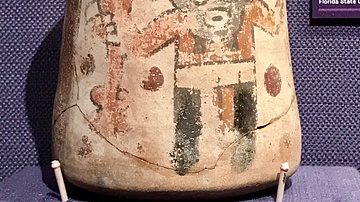
Image
Nazca Skeleton Harvester Jar
This type of unusual pottery was made by the Nazca civilization that inhabited what is now present-day Peru. This piece features skeletal figures, and it was made c. 200 BCE-600 CE. (The Department of Anthropology and Museum of Fine Arts...
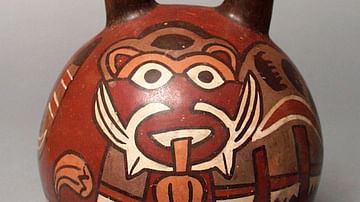
Image
Nazca Double-spouted Pot
A typical double-spouted pot with handle of the Nazca civilization of ancient Peru (200 BCE-500 CE). The design is also typical of Nazca art: Bold lines and colours, often depicting mythical transformational creatures. (Los Angeles County...
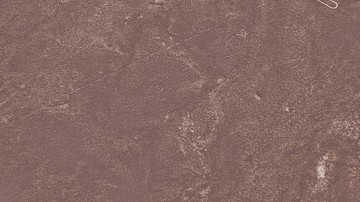
Image
Nazca Line Hummingbird
A Nazca geoglyph depicting a hummingbird. The designs and lines created on the desert floor of southern Peru are known collectively as the 'Nazca Lines' and were made over several centuries between 200 BCE and 500 CE. Their exact purpose...
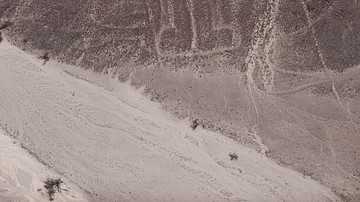
Image
Nazca Line Human Figure
A Nazca geoglyph depicting a human figure. The designs and lines created on the desert floor of southern Peru are known collectively as the 'Nazca Lines' and were made over several centuries between 200 BCE and 500 CE. Their exact purpose...
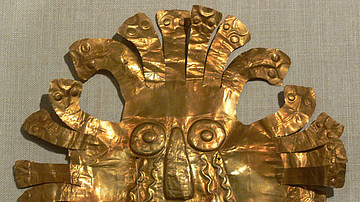
Image
Nazca Gold Mask
A beaten gold mask from the Nazca civilization of Peru, 200 BCE-500 CE. 18.4 x 20.5 cm. The mask may represent a shaman in transformational pose, a common motif in Nazca art. An alternative interpretation is that it represents the weeping...
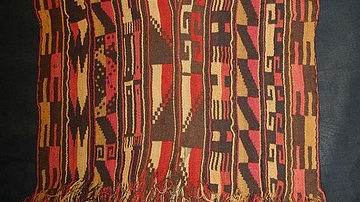
Image
Nazca Poncho
A Nazca poncho (200 BCE-500 CE) which illustrates the vibrant colours and bold linear patterns typical of Nazca textiles. (Lombards Museum)